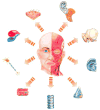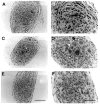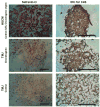Injectable biomaterials for regenerating complex craniofacial tissues
- PMID: 19750143
- PMCID: PMC2742469
- DOI: 10.1002/adma.200802009
Injectable biomaterials for regenerating complex craniofacial tissues
Abstract
Engineering complex tissues requires a precisely formulated combination of cells, spatiotemporally released bioactive factors, and a specialized scaffold support system. Injectable materials, particularly those delivered in aqueous solution, are considered ideal delivery vehicles for cells and bioactive factors and can also be delivered through minimally invasive methods and fill complex 3D shapes. In this review, we examine injectable materials that form scaffolds or networks capable of both replacing tissue function early after delivery and supporting tissue regeneration over a time period of weeks to months. The use of these materials for tissue engineering within the craniofacial complex is challenging but ideal as many highly specialized and functional tissues reside within a small volume in the craniofacial structures and the need for minimally invasive interventions is desirable due to aesthetic considerations. Current biomaterials and strategies used to treat craniofacial defects are examined, followed by a review of craniofacial tissue engineering, and finally an examination of current technologies used for injectable scaffold development and drug and cell delivery using these materials.
Keywords: biomedical materials; drug delivery; hydrogels; polymeric materials; tissue engineering.
Figures









References
-
- Axhausen W. J Bone Joint Surg Am. 1956;38-A:593. - PubMed
-
- Gutta R, Waite PD. The British journal of oral & maxillofacial surgery. 2007. - PubMed
-
- Louis PJ, Gutta R, Said-Al-Naief N, Bartolucci AA. J Oral Maxillofac Surg. 2008;66:235. - PubMed
-
- Sen MK, Miclau T. Injury. 200738(Suppl 1):S75. - PubMed
-
- Smolka W, Iizuka T. J Craniomaxillofac Surg. 2005;33:1. - PubMed
Grants and funding
LinkOut - more resources
Full Text Sources
Other Literature Sources

